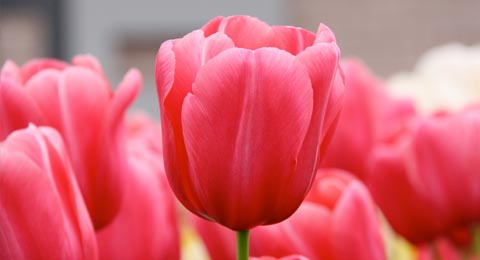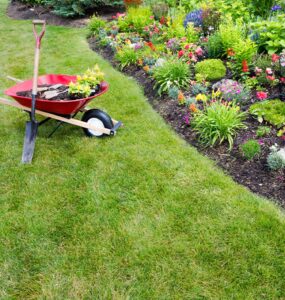Beacons of Spring: Planting Tulips in Alberta
by Rob Sproule
On April 17, 1945, a young Private named Fred Sproule walked into Apeldoorn, Holland after a bitter week of fighting to liberate it. He never forgot that day, and as he became a father and, eventually, my grandfather, he always looked to it as a moment of pride in a nightmarish year.
Tulips became a symbol of our special relationship with Holland, which thanks us for the Liberation with 20,000 tulip bulbs every year. They became the magnificent inspiration for Ottawa’s Tulip Festival. The largest tulip display in the world, the entire city seems to bloom every May, attracting a half million people from around the world.
Why Grow Tulips?
They say that 90% of a romantic relationship is timing. So too with tulips. In early May, when our friends in Vancouver and Toronto are sending us inconsiderate photos of their gardens in radiant bloom, our drab perennial beds look like something out of a bleak Dicken’s novel.
Tulips are sparks of colour in the drab firmament of early spring, as bouyant as morning talk-show hosts while the rest of us flop bedraggled out of bed, mumbling something about coffee. Both proud and bashful, they radiate their full-throated beauty in early May for all to see, and by the time your other perennials wake up they’ve shrunk to humble summer leaves, quietly laying away energy for their next moment in the spotlight.
Normally, this is where I would include a snippet of history for my fellow context addicts, but not this time. Condensing tulips’ history to 100 words would be making a sound byte out of one of the most fascinating moments in plant history. Google “˜Tulip history,’ and make some popcorn.
How to Grow
We’ve all gotten the Facebook shares of far-flung tulip fields in Apeldoorn. A Middle-Eastern native and European classic, it should come as no surprise that they’re borderline hardly here, at best.
Ignore the date the bulb package says to plant them; the package was printed in a warmer region of Canada (usually B.C. or Ontario), which have a few extra blissful weeks of Fall before winter marches in, Darth Vadar style.
Plant tulips from early- to late-September. They need time to take in nutrients, sprout roots and establish themselves before freeze-up. Give them longer to establish themselves and you’ll be treated to a rewarding spring show. If you forget to plant them and remember mid-October, you should be fine as long as you sink them a couple of inches deeper than indicated; give them some extra time to establish themselves.
Make sure you plant in well-drained soil. Originally from Turkey, they like the same growing conditions as olives and fig trees: well drained and on the dry side. If the water pools where you want to plant, I recommend adding some peat moss or sand to about 8″ or finding another spot.
How Not to Grow
A reality check: your tulip flowers will shrink in size through the seasons until they don’t emerge at all. Some of your bulbs won’t emerge at all to begin with. That’s the reality of Alberta weather. Personally, I take the “cup half full” approach and am glad that we can grow such beauties to begin with.
Don’t beat yourself up if your tulips are MIA. Ask yourself a couple of questions:
1. Did we get a lot of thaw/freeze cycles over the winter? If the snow thaws to ground level, as it often does during low-snow winters, moisture seeps down and rots the bulbs like acid. Wet feet are tulips bulbs’ diabolical nemesis.
2. Have you seen any rabbits and/or squirrels in the yard lately, and have they looked pleased with themselves? Critters love emerging tulip green and gobble them down with abandon, usually before you even know they’re there. Planting (very) toxic daffodils around your tulips will help deter opportunist foragers.
Tips
It’s official: size does matter (with tulips, that is). Bigger bulbs equal taller, wider, downright better blooms. Don’t be afraid to rifle through the packages at the garden centre looking for the beefiest bulb. If you squeeze it and your finger sinks into, or through, the bulb, keep walking.
The hardiest tulips will be the traditional red and yellow hues. The double flowering blue striped fringed hybrid with a cherry on top may stand out from the pack, but a sexy picture on the package doesn’t mean much of anything it doesn’t grow.
















